When it comes to ceilings, the Sistine Chapel tends to grab the headlines.
Michelangelo's incredible artwork is world-renowned, and rightly so, but itÔÇÖs not the only beautiful ceiling around. Artists have viewed ceilings as a blank canvas for hundreds of years, from stained glass domes to highly intricate paintings.
So crane your neck and look upwards, as ┤¾¤¾┤½├¢ Bitesize takes you on a tour of some of the worldÔÇÖs most amazing ceilings.
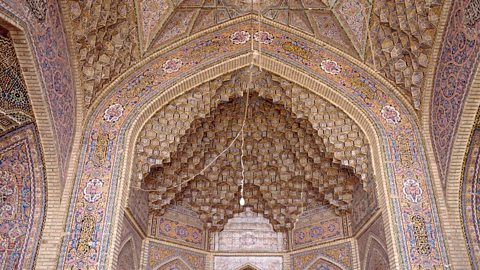
Nasir Al-Mulk Mosque, Iran
Thanks to its distinctive pink ceiling tiles, the Nasir Al-Mulk Mosque is also known as the Pink Mosque. Located in the city of Shiraz in IranÔÇÖs Fars province, the mosque was built between 1876 and 1888 on the orders of Mirza Hassan Ali Khan Nasir al-Mulk, the son of a Persian ruler, during the Qajar period. The floral pink tiles are a departure from the traditional blues and geometric shapes of Islamic architecture.
As well as the stunningly detailed tilework, the Nasir Al-Mulk Mosque is also renowned for its stained glass windows. Visitors will arrive in time for sunrise to enjoy the spectacle of coloured light streaming into the prayer hall and spilling across the carpets and beautiful tiles.

Palau de la M├║sica Catalana, Spain
A wonderful example of Modernisme architecture, with sweeping curves and ornate decoration, this Barcelona concert hall has a breath-taking stained glass ceiling, featuring an inverted dome skylight.
Built between 1905 and 1908, the venue was designed to allow in as much natural light as possible. It has a steel framework with large glass windows at all seating levels. During the daytime, no additional lighting is needed. The warm gold tones of the central dome represent the shining sun, whilst the bluer glass around it features female figures, a choir of women singing in the sky.
The buildingÔÇÖs architect was Antoni Gaud├¡ÔÇÖs contemporary and fellow Modernisme pioneer, Llu├¡s Dom├¿nech i Montaner, but the stained glass itself was designed by Antoni Rigalt. It was designated a UNESCO World Heritage Site in 1997, and is still in use today as a prestigious music venue.

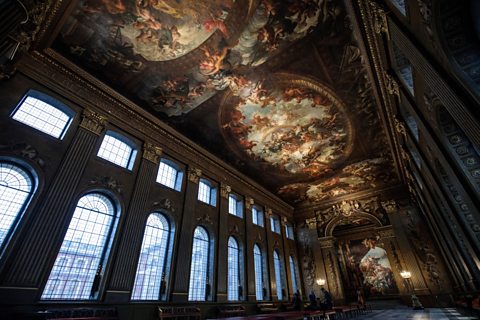
Painted Hall, Old Royal Naval College, UK
Sometimes known as BritainÔÇÖs Sistine Chapel, the Painted Hall of the Old Royal Naval College in Greenwich was designed in the early 18th Century.
Artist Sir James Thornhill spent an incredible 19 years covering the 40,000 square feet (3716 square metres) of walls and ceiling with paintings of around 200 figures. Kings and Queens are intermingled with mythological creatures, all with a distinctive ÔÇïÔÇïA highly ornate, dramatic and sometime exaggerated art style, which focused on the senses and appealing directly to the audienceÔÇÖs emotions. style that makes use of techniques like ÔÇïÔÇïA realistic art technique which gives paintings the illusion of being three-dimensional..
Despite the comparisons drawn with the Sistine Chapel, the focus of the paintings is mainly secular rather than religious, highlighting the United KingdomÔÇÖs commercial and naval success at the time. From a central position on the ceiling, King William III and Queen Mary II look down on visitors.
For his efforts, Thornhill was paid £6,685, an estimated £1.4 million in modern money. That broke down into three pounds for roughly one square metre of ceiling work, and one pound for the same area of wall.
You might recognise the Painted Hall from films like Thor: The Dark World, The KingÔÇÖs Speech and Les Mis├®rables.


Debre Berhan Selassie Church, Ethiopia
Gazing down from the ceiling of EthiopiaÔÇÖs Debre Berhan Selassie Church are the faces of 135 winged cherubs, all lined up in rows.
Originally built by the Emperor Eyasu II in the 17th Century, the name of this small stone church translates to ÔÇÿTrinity and Mountain of LightÔÇÖ. It was redeveloped in the 1880s after the building was damaged by lightning strikes and physical attacks. These days, the church lies within the fortress-city of Fasil Ghebbi, a UNESCO World Heritage site.
Inside, the church walls are covered in visual depictions of biblical verses which acted as an aide for those worshippers who could not read. Twelve stone towers surrounding the church represent the twelve The twelve chief disciples of Jesus Christ. .

The Human Rights and Alliance of Civilizations Room, UN, Switzerland
Frequently used by the Human Rights Council at the United NationÔÇÖs European headquarters, this large meeting room had a stunning makeover in 2008.
Spanish artist Miquel Barcel├│ spent two years planning and covering the huge dome in tonnes of paint, with some of the Deposits, typically of calcium carbonate, that form when water drips from a cave roof and then evaporates. Over time the calcium carbonate builds up to form a long, thin, icicle-like structure. reaching almost a metre long. The paint itself was made from coloured pigments sourced from right across the world.
To ensure that the paint stalactites didnÔÇÖt come loose and fall onto the diplomats below, they were hung from an aluminium honeycomb structure.
When it was opened by Spain's King Juan Carlos and Queen Sofia and UN Secretary-General Ban Ki-moon, the ceiling was not without controversy. Questions were asked about the cost of the artwork as some of the funding came from aid and development funds.

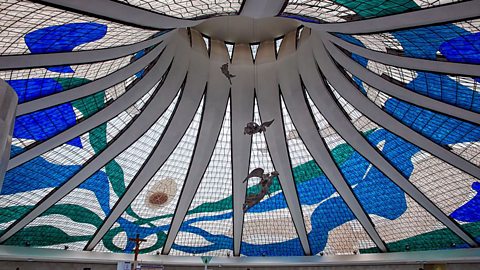
Cathedral of Brasilia, Brazil
Located in the capital of Brazil, Brasilia, this Roman Catholic cathedral has an awe-inspiring stained glass roof, designed by the artist Marianne Peretti. Each triangular section is nearly 30 metres (98 feet) tall and 10 metres (33 feet) wide.
From the outside, this expansive span of glass and the 16 supporting curved concrete columns are practically all that is visible of the cathedral. The rest of the interior is situated below street level. To get into the cathedral, visitors pass through a dark tunnel under a reflection pool, before emerging into the brightly lit space.
Hanging from the ceiling over the The nave is the area in a church that stretches from the entrance to the chancel where the altar is situated. The congregation of a church sit in the nave during services. are three angel sculptures, designed by artists Alfredo Ceschiatti and Dante Croce, ranging in size from 2.2 metres (7.3 feet) to 4.3 metres (14 feet).
This article was first published in May 2023.
Four incredible feats of engineering from around the world
From the tallest road bridge in the world to a glass walkway above a major river.
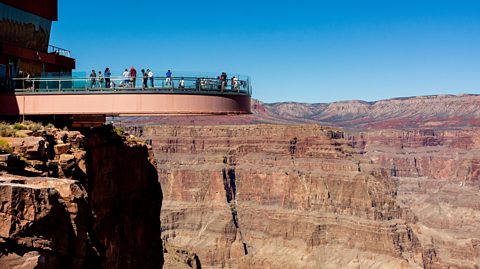
The intriguing lives of famous statues
How the Statue of Liberty came to be - and other sculptural tales
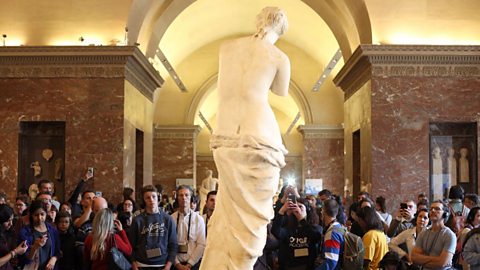
Five natural geological wonders from across the world
The foundation of the Earth has created some beautiful landscapes - here are some of them.
